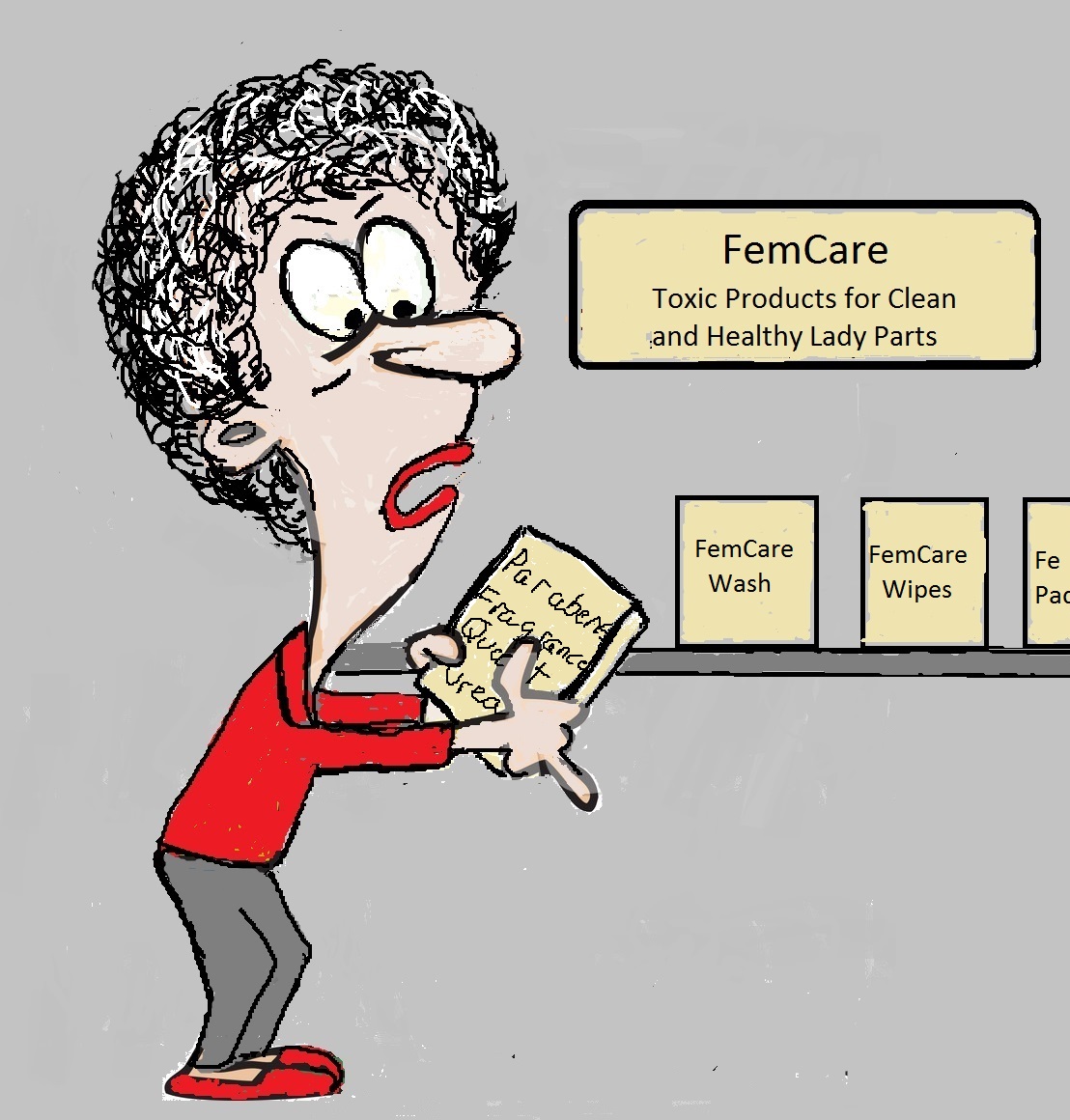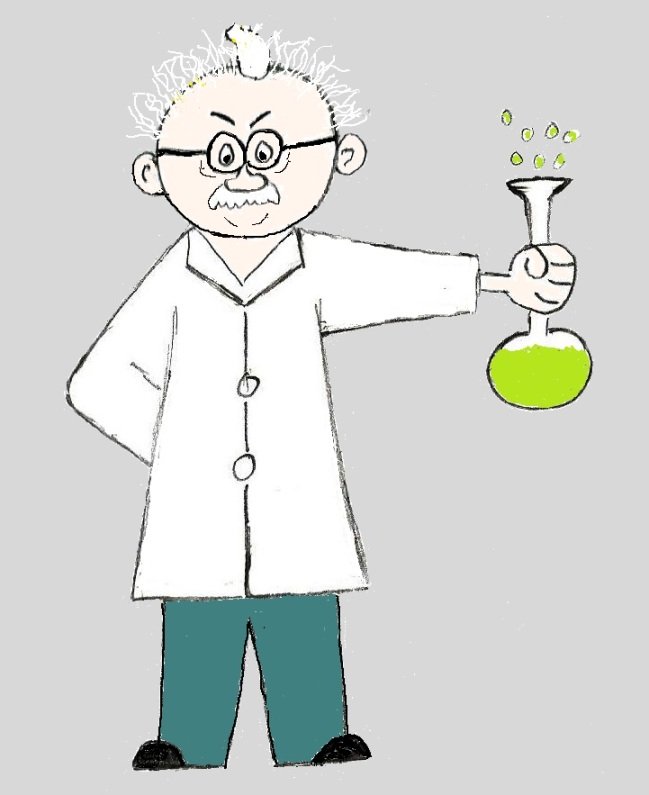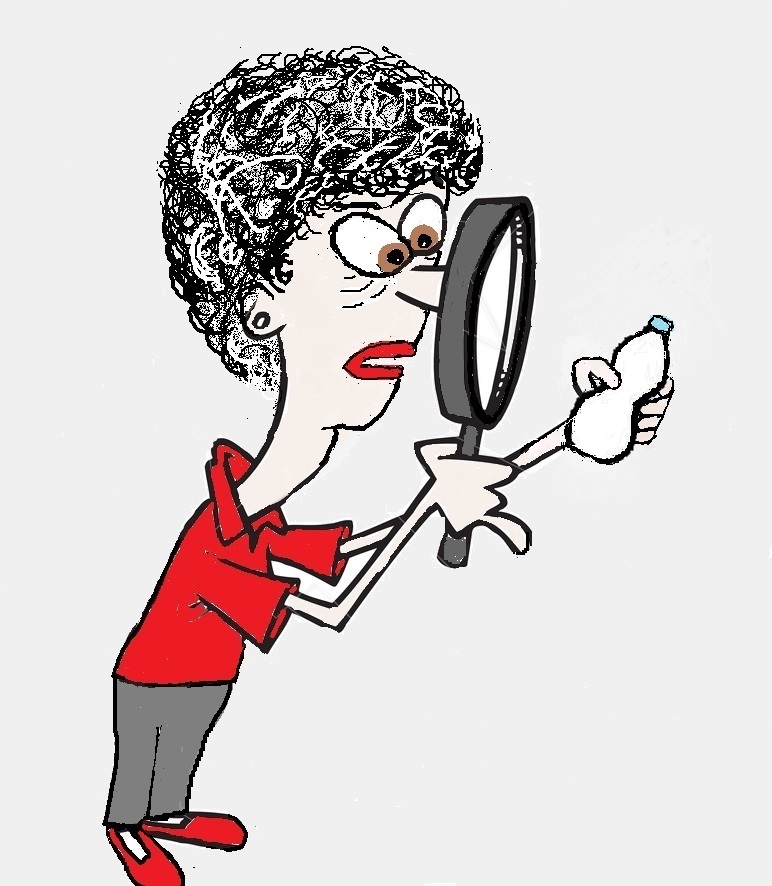- Home
- Toxic Chemicals in Personal Care
- Toxic Chemicals in Feminine Care
Toxic Chemicals in Feminine Care
The toxic chemicals in feminine care products and the area of your body where they are applied is a dangerous combo for your health.Although advertisers try very hard to convince you that feminine care products will keep your lady parts healthy.
But, not only are these products unnecessary, they are dangerous. If you're itching to learn more, read on for 8 reasons to rethink your feminine care routine.
1. Your Super Absorbent Lady Parts
Feminine care products are intended for use on or in an incredibly absorbent part of your body. That means this area of your body is more vulnerable to exposure to the toxic chemicals in feminine care.
The walls of the vagina are filled with numerous blood vessels and lymphatic vessels, which allows for direct transfer of chemicals in to the circulatory system. So any chemicals absorbed through the vagina are easily and effectively distributed throughout your body.
Yet most of the toxic chemicals found in other cosmetic products are also used in feminine care products. So, if you use feminine care products you’re applying toxic chemicals that are carcinogens, reproductive toxins, endocrine disruptors, and allergens on, or even in, the extremely permeable vaginal area.
2. Your Sensitive Microbiome
Just like your gut, your vagina has a complex and interdependent community of bacteria (the vaginal microbiome). This microbiome is important for maintaining a healthy mucosal environment, a healthy pregnancy and for protection against yeast infections or other sexually transmitted pathogens.
The disturbance of your normal microbiome, a condition called bacterial vaginosis (BV), is caused when feminine hygiene products upset the normal pH level of 4.5 in your vagina or by directly killing off bacteria.For example, douching can disrupt this microbiome by altering both the vaginal pH and changing the proportions and types of bacteria in the vagina.
3. Your Exposure To Formaldehyde.
Formaldehyde does an effective job of killing bacteria in feminine care products. So, many of the preservatives found in these products work by releasing formaldehyde during the shelf life of the product.
Quaternium-15 and DMDM Hydantoin, used in feminine care products like wipes, are two types of preservatives that release formaldehyde. Two other formaldehyde-releasing preservatives, Polyoxymethylene urea and Diazolidinyl urea are also found in products like feminine wash and deodorant.
The danger of exposure to these preservatives is that formaldehyde is a known human carcinogen. The potential cancer causing impact of formaldehyde exposure to vaginal tissue is virtually unstudied. There is no research on the direct impact of carcinogen exposure on the vagina.
4. Your Exposure To Fragrance
Many feminine care products contain fragrance. Feminine sprays for example are mainly fragrance chemicals and a propellant. Even some pads and tampons are scented.
Products with fragrance may contain 50–300 different chemicals. Because fragrance is considered proprietary information, companies don’t have to disclose what chemicals they use so you don't know what toxins you are exposed to.
Fragrances can add toxic chemicals to your feminine care that are
carcinogens, irritants, allergens, and potential endocrine disruptors. In other words, synthetic fragrance doesn’t belong in your home, on your body and especially not IN your body.
5. Your Exposure To Phthalates
Phthalates are a group of endocrine disrupting chemicals that don't show up on any ingredient list. But since phthalates are used in scented products to dissolve and carry the smell of fragrances, it’s safe to assume that if you’re using a feminine product that contains fragrance, it also contains phthalates.
And that’s just what a 2012 Silent Spring Institute study found. In this study researchers looked at 213 commercial products and found that fragranced products had the highest concentrations and the most different types of phthalates.
That means using scented feminine products will expose you to low molecular weight phthalates like diethyl phthalate (DEP) and di-n-butyl phthalate (DnBP), the types used in fragranced personal care products.
Vaginal douching may be an especially important source of DEP exposure. One study found women who douched once a month had 52% higher urinary DEP concentrations than non-users. Women who douched two or more times a month had urinary DEP concentrations that were 152% higher than nonusers.
Pads also expose you to phthalates. That's because most sanitary pads are made of synthetic plastic materials.
A 2019 study found Sanitary pads contained as high as 8,014.9 ppb (parts ber billion) of phthalates. That's more than what's found in commercial plastic products!
6. Your Exposure To Parabens
Parabens are another type of toxic chemicals found in feminine care products like feminine wipes, feminine washes, and vaginal creams. Parabens are a health concern because they are also endocrine disruptors that mimic estrogen.
Because its super absorbent, vaginal exposure to hormone-mimicking chemicals like parabens means you're body is absorbing more from feminine care products than it would from say body lotion. And endocrine disruptors can affect your health even when you’re exposed to small amounts.
Parabens have also been linked to breast cancer. And higher levels of parabens in a woman’s urine has also been associated with ovarian aging, which leads to reduced fertility.
7. Your Exposure To Contaminants
Contaminants end up in feminine care products during the manufacturing process. For instance, PEG chemicals in products, used to keep liquid ingredients from seperating, can introduce ethylene oxide, a known carcinogen, and 1,4-Dioxane, a possible carcinogen into washes, wipes and deodorant and anti-itch creams.
Pads and tampons are made from cotton and/or rayon or other pulp fiber that is bleached white. When chlorine is used for bleaching, pads and tampons can become contaminated with highly toxic dioxins and furans. Exposure to dioxins and furans has been linked to cancer, reproductive harm and endocrine disruption.
Plus, cotton is grown with lots of pesticides, which can contaminate pads and tampons with residues. A 2013 study on one brand of tampons found the following pesticide residues:
|
Pesticide |
Level parts per million |
Health Effects |
|
Pyrethrum |
at 66ppm |
Acute toxicity and possible endocrine disruption |
|
Procymidone |
at 37ppm |
Probable human carcinogen, acute toxicity and possible endocrine disruption |
|
Mecarbam |
at 6ppm |
Acute toxicity and possible endocrine disruption |
|
Methidathion |
at 5ppm |
Acute toxicity and possible endocrine disruption |
|
Fensulfothion |
at 5ppm |
Acute toxicity and possible endocrine disruption |
|
Malathion |
at 1ppm |
Acute toxicity and possible endocrine disruption |
|
Piperonyl Butoxide |
at 1ppm |
Possible human carcinogen |
8. Your Exposure To Allergens
Many of the chemicals found in feminine care products are skin irritants and allergens. Methylchloroisofthiazolinone and Methylisothiazolinone (MCI/MI) is a common preservative combo in these products. MCI/MI were named “Allergens of the Year” in 2013 by the American Contact Dermatitis Society.
A 2016 study found that Methylisothiazolinone is a new and important contact allergen for the genital area.
Quaternium-15, a preservative found in washes and wipes, was one of the top five problem allergens in a study of women suffering from vulvar dermatitis. Parabens and some fragrance chemicals can also cause allergic reactions and itching.
If I've convinced you that it's wise to avoid the toxic chemicals in feminine care products, then you need to read Non Toxic Feminine Care.
To learn more about the toxic chemicals found in other types of personal care products check out the posts below.
|
Toxic Chemicals in Body Lotion | |||






